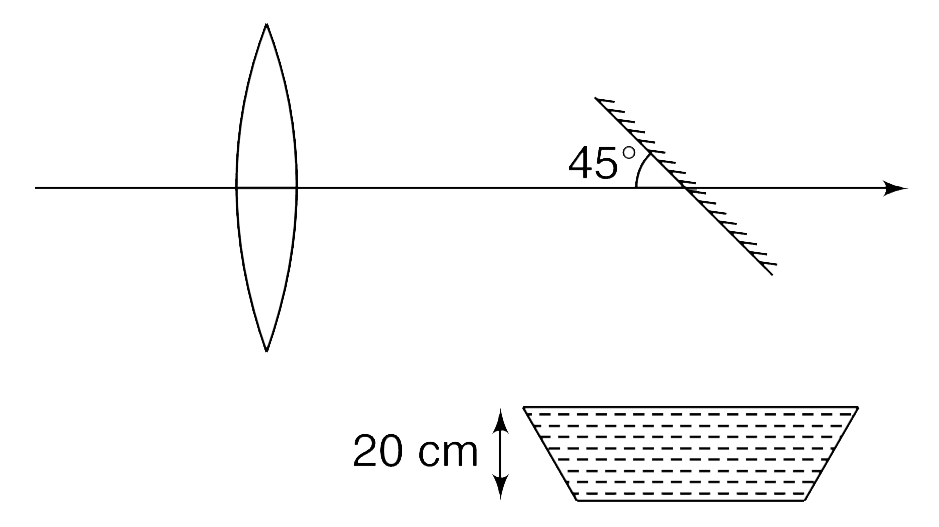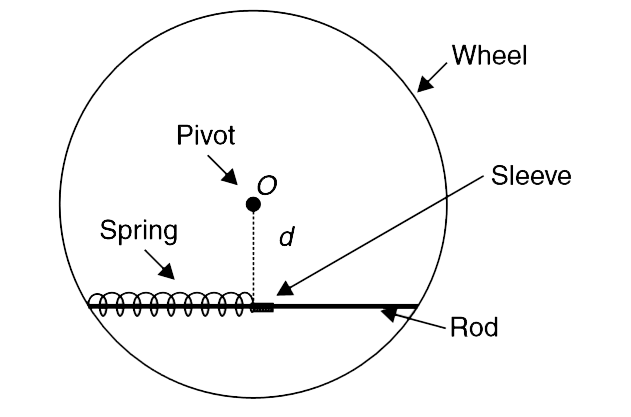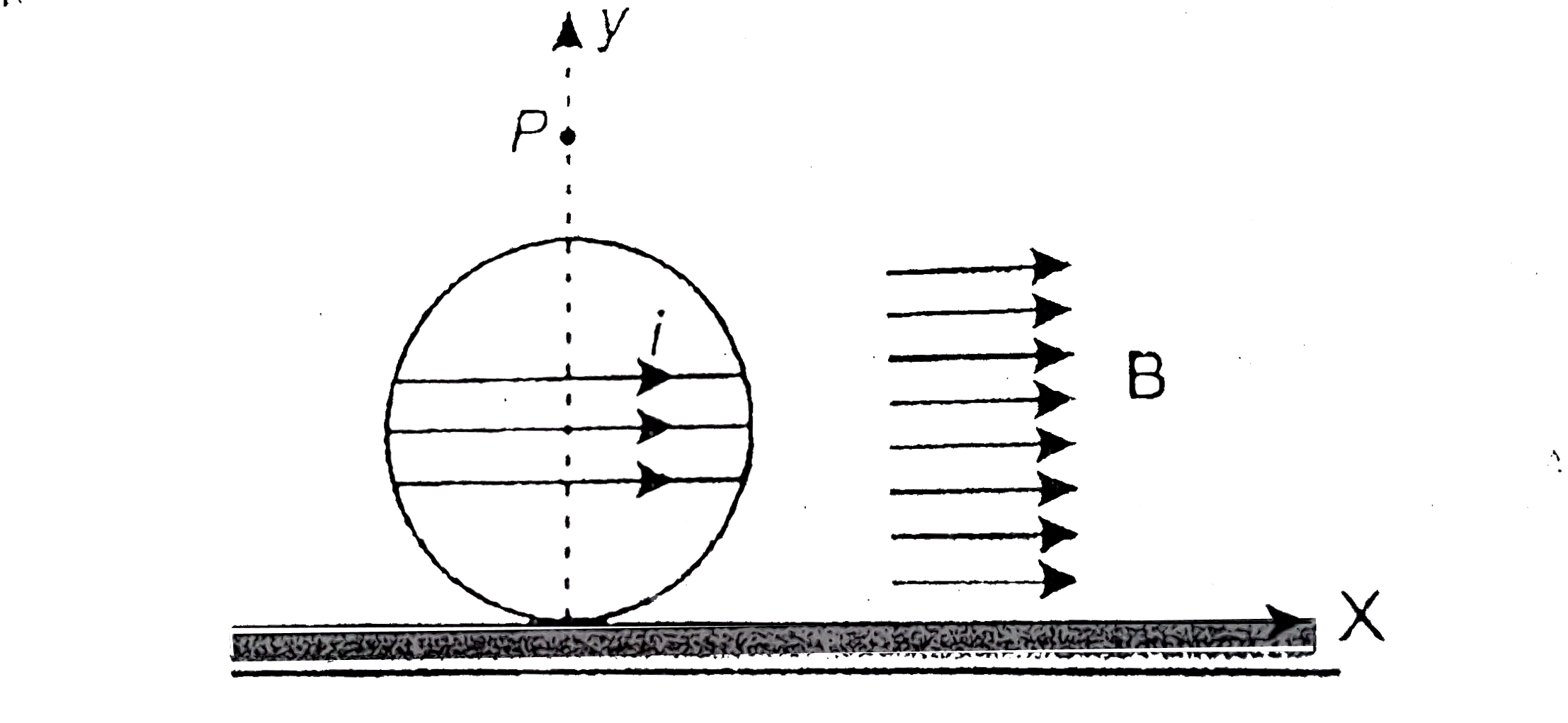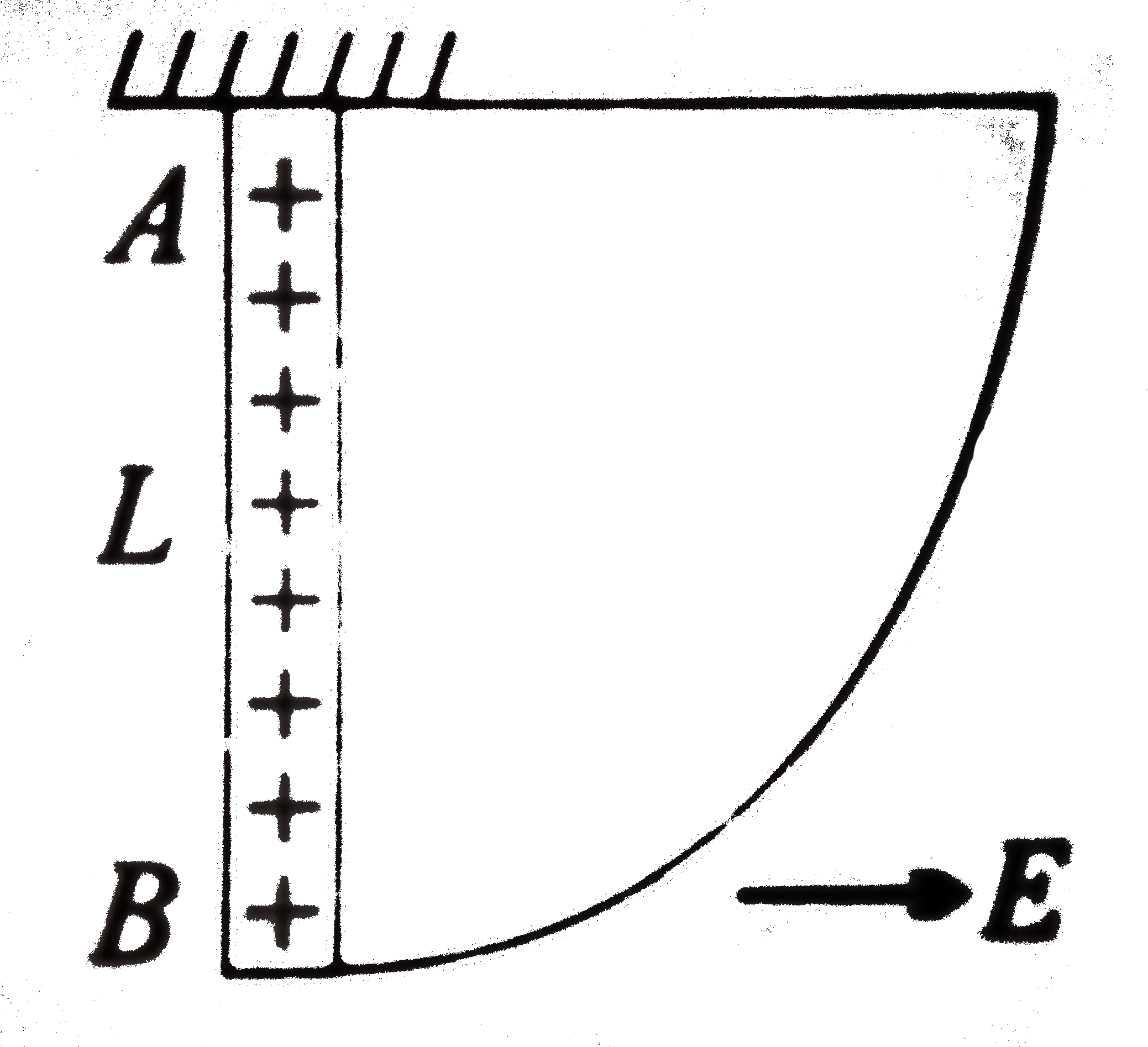The propeller of a small airplane is mounted in the front. The propeller rotates clockwise if seen from behind by the pilot. The plane is flying horizontally and the pilot suddenly turns it to the right. Will the body of the plane have a tendency to get inclined to the horizontal? If yes, does the nose of the plane veer upward or downward? Why?
The correct Answer is:The nose of the plane tends to veer downard.
Topper's Solved these Questions
Similar Questions
Aircraft experience a lift force (due to air) that is perpendicular to the plane of the wings A small airplane is flying at a constant speed of 280 kph At what angle from the horizontal must the wings of the airplane be tilted for the plane to execute a horizontal turn from east to north with a turning radius of 1200 m ?
View SolutionA small object is at the bottom of a container which has water filled up to a height of 20 cm. There is a plane mirror inclined at 45° to the horizontal above the container. A convex lens having focal length 15 cm is at a distance of 50 cm from the mirror. The horizontal principal axis of the lens is at a distance of 45 cm from the bottom of the container. Find the distance of the image (from the lens) of the object as seen by an observer to the left of the lens. Light rays from the object hit the lens only after they are reflected from the mirror. (use μwater=4/3)

View Solution
Knowledge Check
An airplane with a speed of 97.5 m/s is climbing upward at an angle of 50.0∘ with respect to the horizontal. When the plane's altitude is 732 m, the pilot releases a package, (a) Calculate the distance along the ground, measured from a point directly beneath the point of release, to where the package hits the earth.
A+425mB+1380mC−678mD−2880m
A wheel is mounted on frictionless central pivot and it can rotate freely in the vertical plane. There is a horizontal light rod fixed to the wheel below the pivot. There is a small sleeve of mass m which can slide along the rod without friction. The sleeve is connected to a light spring. The other end of the spring is fixed to the rim as shown. The sleeve is at the centre of the rod and the spring is relaxed. Now the wheel is held at rest and the sleeve is moved towards left so as to compress the sprig by some distance. The sleeve and the wheel are released simultaneously from this position.
(a) Is it possible that the wheel does not rotate as the sleeve perform SHM on the rod ?
(b) Find the value of spring constant k for situation described in (a) to be possible. The distance of rod from centre of the wheel is d.

View SolutionA person wants to roll a solid non-conducting spherical ball of mass m and radius r on a surface whose coefficient of static friction is μ. He placed the ball on the surface wrapped with n turns of closely packed conducting coils of negligible mass at the diameter.
By some arrangement he is able to pass a current i through the coils in anti-clockwise direction when viewed downwards from point P. A constant horizontal magnetic field →B is present throughout the space along the positive x direction as shown in the figure. (Assume μ is large enough to help pure rolling motion and initially the plane of the coils is perpendicular to the y-axs)
The angular velocity of the ball when it is has rotated through an angle θ is (θ<180∘)
View SolutionA current circular conducting loop exerts a magnetic field both inside and outside it. The magnetic field at the cetre of a current loop of radius 'R' and carrying a current I is given as :
B=μ0I2R
The magnetic field lines due to a circular current loop form closed loops. The direction of the magnetic field is given by the right hand thumb rule, which states that if one curls the palm of his right hand around the current loop with the fingers pointing in the direction of the current, the right hand thumb will give the direction of the magnetic field. From this law it is clear that the direction of magnetic field →B is always perpendicular to the direction of flow of current or perpendicular to the plane of circular current loop.
Draw the magnetic field lines due to a circular current loop placed in a horizontal plane.
An enamelled copper wire of length L is bent in the form of a circular loop and a curretn I is passed through it so that a magnetic field B is get up at its centre. Now the same wire is bent in the form of a circular coil having N turns and same current I is passed through it. What is the magnetic field develop at the centre of this coil?
View Solution1 kg particle at a height of 4 m has a speed of 2 m/s down a incline making an angle 53∘ with horizontal as shown in figure. It slides on a horizontal section of length 3 m at ground level and then up an incline making an angle 37∘ with horizontal. All surfaces have μk=0.5. How far from point O (bottom of right inclined plane), along the incline making and angle 37∘ with horizontal, does the particle first come to rest?
View Solution1 kg particle at a height of 4 m has a speed of 2 m/s down a incline making an angle 53∘ with horizontal as shown in figure. It slides on a horizontal section of length 3 m at ground level and then up an incline making an angle 37∘ with horizontal. All surfaces have μk=0.5. How far from point O (bottom of right inclined plane), along the incline making and angle 37∘ with horizontal, does the particle first come to rest?
View SolutionA rod AB of length L and mass M is uniformly charged with a charge Q, and it is suspended from end A as shown in fig. The rod can freely rotate about A in the plane of the figure. An electric field E is suddenly switched on in the horizontal direction due to which the rod gets turned by a maximum angle of 90∘. The magnitude of E is equal of nMg/Q. Find the value of n.

View SolutionA rod AB of length L and mass m is uniformly charged with a charge Q, and it is suspended from end A as shown in fig. The rod can freely rotate about A in the plane of the figure. An electric field E is suddenly switched on in the horizontal direction due to which the rod gets turned by a maximum angle of 90∘. The magnitude of E is equal of nMg/Q. Find the value of n.

View Solution
